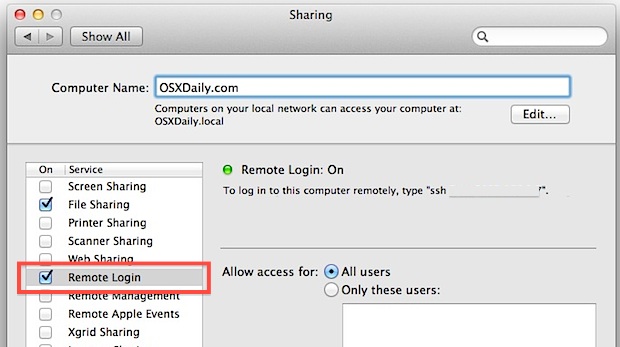

- #Xming putty for mac mac os x#
- #Xming putty for mac pdf#
- #Xming putty for mac install#
- #Xming putty for mac windows#
For X forwarding to work, you'll need to start Xming before connecting to the remote system with your SSH client (for example, PuTTY).
#Xming putty for mac install#
These seem like a lot of conditions in many network environments (with Firewalls, proxies, NAT), but if you don't need the X11 data encrypted and there's nothing preventing direct X11 traffic from the server to your computer then you should see better X11 performance. Putty with xming install For macOS, download and install XQuartz. Make sure your connection settings for the remote system have Enable X11 forwarding selected in the 'PuTTY Configuration' window, see Connection > SSH > X11. After setting the DISPLAY you should be able to start the application (xclock, xeyes, xterm, xetc.) and see the application appear on your desktop with Xming. Launch your X server application (for example, Xming).
#Xming putty for mac windows#
If you want to send X11 traffic without forwarding it through SSH, and if your firewalls and proxy servers allow it, and if the server you're connecting to and starting X Windows applications on can "see" your computer, then you'll need to manually set your DISPLAY environment variable on the Unix server to whatever the IP address or hostname is where you're running Xming.
#Xming putty for mac pdf#
pdf document refers to "How to start a UNIX Terminal window" but doesn't actually include that section - so I'm not sure where the document was headed with the idea. This page mentions switching to non-secure after login to move things along: How would I go about doing that with SecureCRT if that ends up being the best option? Is there any way through Secure CRT to get this running faster? This page mentions switching to non-secure after login to move things along: There's no delay using remote desktop, but if I run the same programs connecting directly to the server from home, it's torture. Somehow this extra complication is actually making things faster: I use remote desktop to just connect to my computer at the facility, and use Xming on that machine to run my programs connecting to the server from a desktop within the facility. Essentially it’s an X-server which starts. Xming is an X Windows port for Microsoft Windows.
#Xming putty for mac mac os x#
Mac OS X has one built-in program that allows you to connect to a Linux. But in reality, if you don’t need any sessions but only want to remotely start an application and get a window from it on your desktop, you won’t need any of these expensive products the easiest will be to use X11 forwarding and Xming. There's a delay for everything-loading the window, entering text-to the point of wondering if it's frozen, then responding just before I shut it down. Note that Xming needs to be running before you start your PuTTY SSH session. My DSL connection works perfectly well, but working with the program is impossibly slow. On GNOME you can start PuTTY by pressing the Super key-the one between the right hand Ctrl and Alt keys-and typing “putty”.Hi-I'm using Xming to run a remote program on a server I connect to via secureCRT. On Windows, you’ll find PuTTY in your Start menu after installing it. It runs as soon as it is installed and appears as an icon in your system tray. X Forwarding in Windows using Xming and PuTTY. The Xming X server was used to research this article, and it performed perfectly. If you are connecting to the Linux Grace systems using a Windows/Mac computer, you may find it very useful. So we’ll need to install one, just like when launching graphical Linux applications from Windows 10’s Windows Subsystem for Linux. Windows doesn’t have an X server because it doesn’t need one. There has to be somewhere for the graphical applications to open and run in. Linux graphical applications rely on an X server to provide a graphical desktop environment. The rest of the process will then work the same as it does on Linux. If you’re running PuTTY on Windows, you’ll have to install an X server before continuing. Make sure your connection settings for the remote system have Enable X11-forwarding. To install PuTTY on Manjaro, use this command: sudo pacman -Syu putty PuTTY for Windows Launch your X server application (for example, Xming). To install PuTTY on Fedora, use this command: sudo dnf install putty To install PuTTY on Ubuntu, use this command: sudo apt-get install putty If PuTTY isn’t already installed on your computer, you can install as follows.


 0 kommentar(er)
0 kommentar(er)
